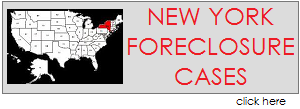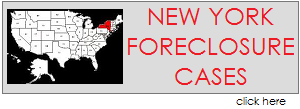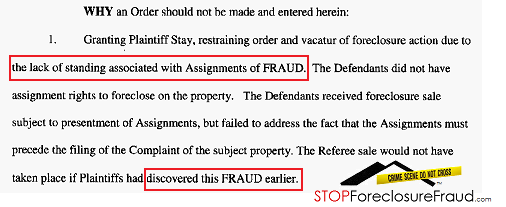2011 NY Slip Op 50375(U)
NYCTL 2009-A TRUST AND THE BANK OF NEW YORK AS COLLATERAL AGENT AND CUSTODIAN FOR THE NYCTL 2009-A TRUST, Plaintiffs,
v.
273 BRIGHTON BEACH AVE. REALTY CO., ET AL., Defendants.
8124/10.
Supreme Court, Kings County.
Decided March 15, 2011.
Leonid Krechmer, Esq., Windels Marx Lane & Mittendorf LLP, NY NY, Plaintiff.
The defendant did not answer, Defendant.
ARTHUR M. SCHACK, J.
In this action to foreclose on a tax lien for the premises located at 273 Brighton Beach Avenue, Brooklyn, New York (Block 8672, Lot 31, County of Kings), plaintiffs,
NYCTL 2009-A TRUST AND THE BANK OF NEW YORK AS COLLATERAL AGENT AND CUSTODIAN FOR THE NYCTL 2009-A TRUST (THE TRUST), previously moved for an order to appoint a referee to compute and amend the caption. In my December 7, 2010 decision and order, I denied the motion without prejudice, because the affidavit submitted in support of the motion, upon the default of defendants, was not executed by an officer of THE TRUST or someone with a power of attorney from THE TRUST. I granted leave to plaintiffs to renew their motion, within sixty (60) days of the December 7, 2010 decision and order, upon plaintiffs’ presentation to the Court of its compliance with the statutory requirements of CPLR § 3215 (f), with “an affidavit of facts” executed by someone who is an officer of THE TRUST or someone who has a valid power of attorney from THE TRUST.
Plaintiffs moved in a timely manner, on December 29, 2010, and renewed their motion for the appointment of a referee and to amend the caption. However, plaintiffs failed to comply with my December 7, 2010 decision and order. Therefore, the Court grants plaintiffs one final opportunity to comply, within sixty (60) days of this decision and order, by presenting the Court with “an affidavit of facts” executed by someone who is an officer of THE TRUST or someone who has a valid power of attorney from THE TRUST. A repeated failure to comply with this court order will mandate the dismissal of the instant action with prejudice.
Background
THE TRUST purchased certain tax liens from the City of New York on August 18, 2009. These liens, including the tax lien for the premises known as 273 Brighton Beach Avenue, Brooklyn, New York (Block 8672, Lot 31, County of Kings), were recorded in the Kings County Office of the City Register, New York City Department of Finance, on August 25, 2009, at City Register File Number (CRFN) XXXXXXXXXXXXX.
Plaintiffs’ original moving papers for an order to appoint a referee to compute and amend the caption failed to present an “affidavit made by the party,”pursuant to CPLR § 3215 (f). Instead the previous motion contained an affidavit of merit by Marc Marino, who stated “I am the Authorized Signatory of Mooring Tax Asset Group, LLC, servicing agent for plaintiffs in the within action.” For reasons unknown to the Court, plaintiffs failed to provide any power of attorney authorizing Mooring Tax Asset Group, LLC to go forward with the instant foreclosure action. Therefore, in my December 7, 2010 decision and order, I denied without prejudice the original motion, for the appointment of a referee to compute and to amend the caption. I granted plaintiffs leave to comply with CPLR § 3215 (f) by providing an “affidavit made by the party,” whether by an officer of THE TRUST or someone with a valid power of attorney from THE TRUST, within sixty (60) days from my December 7, 2010 decision and order.
In the instant renewed motion, “[i]n an effort to comply with said [December 7, 2010] Decision and Order, Plaintiffs submit with the instant application the Affidavit of Marc Marino sworn to on December 21, 2010, and a relevant except from the Servicing Agreement, certified pursuant to CPLR § 2105 (Exhibit “E”) [¶ 11 of affirmation in support of motion].” Further, plaintiffs’ counsel alleges that this “establishes . . . Plaintiffs’ compliance with CPLR § 3215 (f), including Marc Marino’s personal knowledge of the facts and his authority to seek the relief requested herein.” Despite the arguments presented by plaintiffs’ counsel, it is clear that plaintiffs’ counsel failed to comply with my December 7, 2010 decision and order. Plaintiff’s submission is not in compliance with the requirements of CPLR § 3215 (f).
Discussion
CPLR § 3215 (f) states:
On any application for judgment by default, the applicant shall file proof of service of the summons and the complaint, or a summons and notice served pursuant to subdivision (b) of rule 305 or subdivision (a) of rule 316 of this chapter, and proof of the facts constituting the claim, the default and the amount due by affidavit made by the party. . . Where a verified complaint has been served, it may be used as the affidavit of the facts constituting the claim and the amount due; in such case, an affidavit as to the default shall be made by the party or the party’s attorney. [Emphasis added].
Plaintiffs continue to fail to submit “proof of the facts” in “an affidavit made by the party.” The renewed “affidavit of facts” was submitted by Marc Marino, “the Authorized Signatory of Mooring Tax Asset Group, LLC, servicing agent for plaintiffs in the within action.” Further, plaintiffs’ counsel provided the Court with snippets of the July 1, 2009 Amended and Restated Servicing Agreement between NYCTL 2009-A TRUST, Issuer, MOORING TAX ASSET GROUP, LLC, Servicer and THE BANK OF NEW YORK MELLON, Paying Agent and Collateral Agent and Custodian, consisting of the cover paper, pages 16, 17, 18 and three signature pages. In my December 7, 2010 decision and order I stated that:
Mr. Marino must have, as plaintiffs’ agent, a valid power of attorney for that express purpose. Additionally, if a power of attorney is presented to this Court and it refers to servicing agreements, the Court needs a properly offered copy of the servicing agreements, to determine if the servicing agent may proceed on behalf of plaintiffs.
(EMC Mortg. Corp. v Batista, 15 Misc 3d 1143 (A), [Sup Ct, Kings County 2007]; Deutsche Bank Nat. Trust Co. v Lewis, 14 Misc 3d 1201 (A) [Sup Ct, Suffolk County 2006]).
While it appears in the snippets, on page 17, that the Servicer might have authority to prepare affidavits in support of a foreclosure action, the Court, in following the requirements of CPLR § 3215 (f), needs an affidavit by an officer of THE TRUST or someone with a valid power of attorney from THE TRUST.
General Obligations Law § 5 — 1501 (10) defines “power of attorney” as “a written document by which a principal with capacity designates an agent to act on his or her behalf.” The selected portions presented of the July 1, 2009 Amended and Restated Servicing Agreement are not a power of attorney. Further, the Court wonders why plaintiffs’ counsel did not present the entire servicing agreement for review. Is there classified information in the document? Moreover, unlike a power of attorney, the parties executing the July 1, 2009 Amended and Restated Servicing Agreement did not sign under penalty of perjury before a notary public. One signatory, Jacqueline Kuhn, Assistant Treasurer, signed the document for THE BANK OF NEW YORK MELLON, as Paying Agent and Collateral Agent and Custodian, and then acknowledged and agreed to the agreement for THE BANK OF NEW YORK MELLON, as Indenture Trustee. It is comforting to know that Ms. Kuhn agreed with herself.
Therefore, the instant renewed motion for an order to appoint a referee to compute and amend the caption is denied without prejudice. The Court will grant THE TRUST a final opportunity for the appointment of a referee to compute and to amend the caption by its timely submission of an affidavit by either an officer of THE TRUST, or someone with a valid power of attorney from THE TRUST, possessing personal knowledge of the facts.
Plaintiffs’ counsel is reminded of the recent December 16, 2010 Court of Appeals decision, in Gibbs v St. Barnabas Hosp. (16 NY3d 74), which instructed, at *5:
As this Court has repeatedly emphasized, our court system is dependent on all parties engaged in litigation abiding by the rules of proper practice (see e.g. Brill v City of New York, 2 NY3d 748 [2004]; Kihl v Pfeffer, 94 NY2d 118 [1999]). The failure to comply with deadlines not only impairs the efficient functioning of the courts and the adjudication of claims, but it places jurists unnecessarily in the position of having to order enforcement remedies to respond to the delinquent conduct of members of the bar, often to the detriment of the litigants they represent. Chronic noncompliance with deadlines breeds disrespect for the dictates of the Civil Practice Law and Rules and a culture in which cases can linger for years without resolution.
Furthermore, those lawyers who engage their best efforts to comply with practice rules are also effectively penalized because they must somehow explain to their clients why they cannot secure timely responses from recalcitrant adversaries, which leads to the erosion of their attorney-client relationships as well. For these reasons, it is important to adhere to the position we declared a decade ago that “[i]f the credibility of court orders and the integrity of our judicial system are to be maintained, a litigant cannot ignore court orders with impunity [Emphasis added].” (Kihl, 94 NY2d at 123).
“Litigation cannot be conducted efficiently if deadlines are not taken seriously, and we make clear again, as we have several times before, thatdisregard of deadlines should not and will not be tolerated (see Miceli v State Farm Mut. Auto Ins. Co., 3 NY3d 725 [2004]; Brill v City of New York, 2 NY3d 748 [2004]; Kihl v Pfeffer, 94 NY2d 118 [1999]) [Emphasis added].” (Andrea v Arnone, Hedin, Casker, Kennedy and Drake, Architects and Landscape Architects, P.C., 5 NY3d 514, 521 [2005]).” As we made clear in Brill, and underscore here, statutory time frames —like court-order time frames (see Kihl v Pfeffer, 94 NY2d 118 [1999]) — are not options, they are requirements, to be taken seriously by the parties. Too many pages of the Reports, and hours of the courts, are taken up with deadlines that are simply ignored [Emphasis added].” (Miceli, 3 NY3d at 726-726).
Conclusion
Accordingly, it is
ORDERED, that the renewed motion of plaintiffs NYCTL 2009-A TRUST AND THE BANK OF NEW YORK AS COLLATERAL AGENT AND CUSTODIAN FOR THE NYCTL 2009-A TRUST, for an order appointing a referee to compute and amend the caption in a tax lien foreclosure action for the premises located at 273 Brighton Beach Avenue, Brooklyn, New York (Block 8672, Lot 31, County of Kings) is denied without prejudice; and it is further
ORDERED, that leave is granted to plaintiffs NYCTL 2009-A TRUST AND THE BANK OF NEW YORK AS COLLATERAL AGENT AND CUSTODIAN FOR THE NYCTL 2009-A TRUST, to renew its application, within sixty (60) days of this decision and order, for an order appointing a referee to compute and amend the caption in a tax lien foreclosure action for the premises located at 273 Brighton Beach Avenue, Brooklyn, New York (Block 8672, Lot 31, County of Kings), upon presentation to the Court of its compliance with the statutory requirements of CPLR § 3215 (f), with an affidavit of facts by someone with authority to execute such an affidavit; and it is further
ORDERED, the failure of plaintiffs NYCTL 2009-A TRUST AND THE BANK OF NEW YORK AS COLLATERAL AGENT AND CUSTODIAN FOR THE NYCTL 2009-A TRUST, to comply with the requirements of the preceding paragraph will result in the dismissal with prejudice of the instant tax lien foreclosure action for the premises located at 273 Brighton Beach Avenue, Brooklyn, New York (Block 8672, Lot 31, County of Kings).
This constitutes the Decision and Order of the Court.
[ipaper docId=51273406 access_key=key-neoqia8pou1bk1p1mj height=600 width=600 /]










![[NYSC] Judge F. Dana Winslow Grants Vacatur of Default Judgment Due To “NAIL & MAIL” (Process Service) WELLS FARGO v. DALRYMPLE](https://stopforeclosurefraud.com/wp-content/themes/gazette/thumb.php?src=wp-content/uploads/2011/02/nailandmail4.jpg&w=100&h=57&zc=1&q=90)
![[NYSC] “Bona Fide Purchaser After Foreclosure, Inequitably Effected” WAMU v. EDWARD MURPHY](https://stopforeclosurefraud.com/wp-content/themes/gazette/thumb.php?src=wp-content/uploads/2011/02/foreclosure-housing2.jpg&w=100&h=57&zc=1&q=90)
![[NYSC] Judge Spinner “Plaintiff’s Papers Raises Disturbing Issues”, “Appears To Run Counter To New York’s Statute of Frauds” BENEFICIAL HOMEOWNER SERV. CORP v. STEELE](https://stopforeclosurefraud.com/wp-content/themes/gazette/thumb.php?src=wp-content/uploads/2011/02/Fraud_12.jpg&w=100&h=57&zc=1&q=90)








![[NYSC] Judge Restrains EMC MTG, MERS From Foreclosing For FRAUDULENT ASSIGNMENTS](https://stopforeclosurefraud.com/wp-content/themes/gazette/thumb.php?src=wp-content/uploads/2011/01/fraud24.jpg&w=100&h=57&zc=1&q=90)



![[NYSC] NY JUDGE DENIES 42 FORECLOSURE CASES “HAMP, AFFIDAVIT” ISSUES](https://stopforeclosurefraud.com/wp-content/themes/gazette/thumb.php?src=wp-content/uploads/2010/12/denied.gif&w=100&h=57&zc=1&q=90)
![[NYSC] JUDGE DISMISSES FORECLOSURE, ORDERS WELLS & FREDDIE TO MODIFY LOAN: Wells Fargo v. Meyers](https://stopforeclosurefraud.com/wp-content/themes/gazette/thumb.php?src=wp-content/uploads/2010/12/badfaith.jpg&w=100&h=57&zc=1&q=90)

Recent Comments